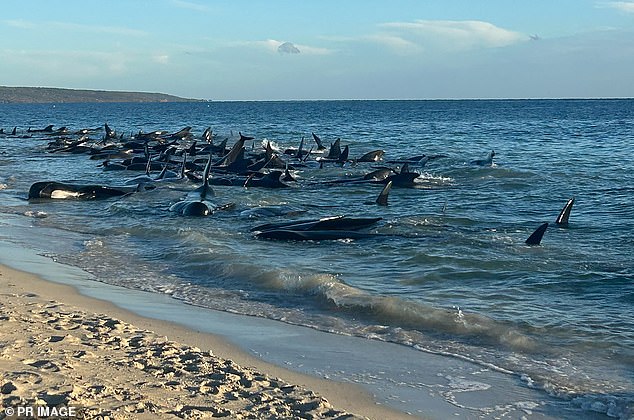Wildlife rescuers have saved more than 200 pilot whales from a mass stranding on a beach in southwest Western Australia.
But 31 of the whales could not be saved despite authorities’ rescue efforts.
The whales became stranded in Toby’s Inlet, near Dunsborough, about 243 kilometers southwest of Perth.
Speaking on ABC, Geographe Marine Research president Ian Wiese said it was a good story because typically similar events of this nature had seen around 100 whales die and only five had been saved.
“In this case, there were over 200 along the beach here and nearby, and about 31 died, but the rest escaped, which is an amazing story,” he said.
Wildlife rescuers have saved more than 200 pilot whales from a mass stranding on a beach in southwest Western Australia.
“There are 31 on the beach here that have died, marine biologists are measuring them and taking statistics and they will take them to some landfill.”
Wiese said that no one really knew why whales ran aground and that “the world was baffled by these types of events.”
“I don’t think we’re any closer to understanding it,” he said.
When Wiese first arrived at the site Thursday morning, there were about 160 whales almost out of the water and about 200 people who were with the whales.
“They were trying to comfort them and make sure their heads were out of the water so they could breathe,” he said.
‘After an hour or so, suddenly those who were still alive left and took to sea.
“It’s very possible that they decide to come back to shore at some other beach nearby, that’s something that happens a lot, but we’re hopeful that they won’t.”
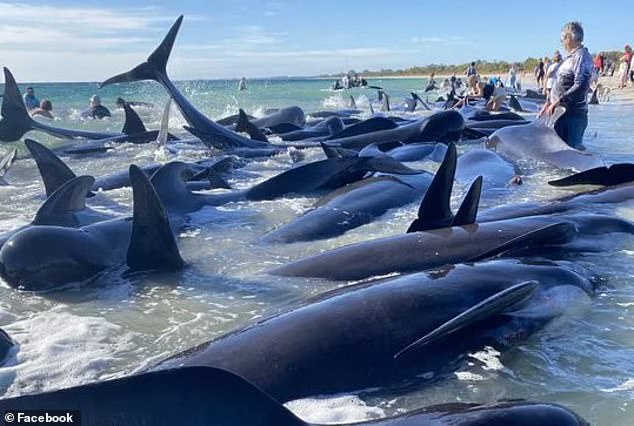
The whales became stranded in Toby’s Inlet, near Dunsborough, about 243 kilometers southwest of Perth.
It is the third mass stranding Mr Wiese has attended in south-west WA.
“Each time there were almost 100 specimens of the same species that ran aground and the results were very poor in those situations,” he said.
On Thursday morning, authorities warned people that there could be increased shark activity in the area, saying it was possible that dead and injured animals could attract sharks close to shore.
Wiese said he had not seen any evidence of sharks, but that is why authorities would try to remove the deceased animals as quickly as possible.
“This time of year we have a salmon migration and the sharks gobble up the schools of salmon, so I think they’re pretty well fed right now,” he said.
Earlier in the day, Parks and Wildlife reported there were about four pods of whales spread out along 500 meters of shoreline.
Another 20 whales were in a pod about 1.5 kilometers offshore and another pod of 110 whales were together closer to shore.
DBCA South West regional wildlife officer Pia Courtis said the dead whales were being removed from the beach and authorities were taking measurements and sampling.
“We have boats in the water and observation planes in the air doing searches every two hours to see where they are,” he said.
‘So far, so good. They have not returned to the coast but we will continue to monitor them.
“They haven’t been reported to have gotten any closer than that, so hopefully they’re in deeper water.”
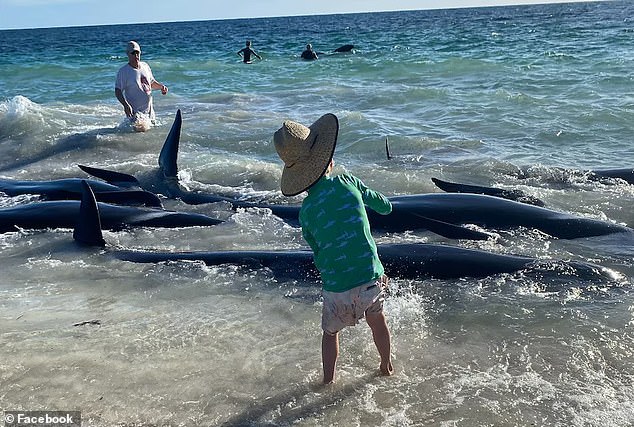
Authorities are collecting morphometric measurements to determine the sex and age of the dead whales, then will conduct post-mortem tests.
Courtis said it was important to remove the dead whales from the water to stop encouraging other whales that were in the water to run aground again and that they were using boats to keep pilot whales that were in deeper waters offshore.
“Every stranded whale is different and there are different situations, so it’s hard to say, but we’ve learned a few things from Cheynes Beach (Albany),” he said.
‘We put them into play here, but it’s hard to know if it’s a different location, but we’ll try to take as many samples as we can to see if anything happens in the population.
“Obviously, when there are large groups of whales, you attract other species, such as sharks, so people need to be aware of other species that are around.
“What we want to do is keep people safe and stabilize our animals quickly, and think about the health and well-being of the animals that are stranded.”
Holly Raudino, DBCA senior marine wildlife research scientist, said there were a variety of reasons why whales could run aground and it could be that one member of the pod was sick and the others followed.
“Sometimes it can be some kind of noise or an illness, so it’s very varied,” he said.
“We are taking several samples and, in particular, the priority is to exclude infectious diseases.”
Authorities are collecting morphometric measurements to determine the sex and age of the dead whales, then will conduct post-mortem tests.
“I’ve only seen a few of the animals, but it appears most are adult females with some young, but I don’t have an initial idea what caused the stranding,” he said.
‘There was an anecdotal report that one of the individuals was visibly ill and is one of the whales still swimming freely out there.
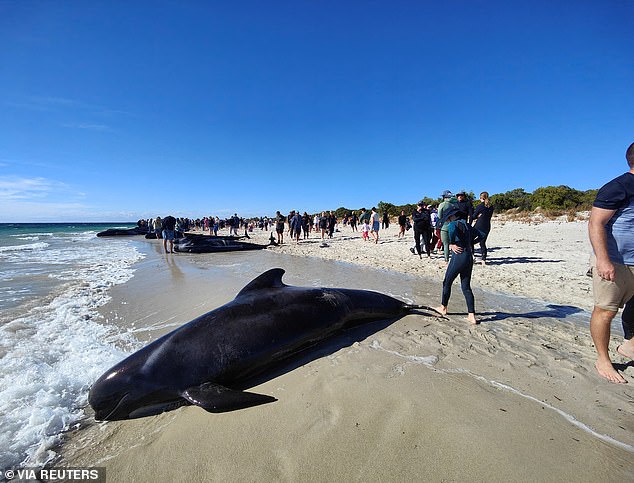
The whales were stranded in Toby’s Inlet, near Dunsborough.
A Parks and Wildlife spokesperson said they were doing everything they could to respond safely and keep volunteers and staff safe, while also looking out for the whales’ interests.
“Our team is assessing the conditions of the whales that have stranded on the beach,” a spokesperson said.
‘Our teams in the water are trying to keep the animals together and away from the beach.
‘Based on previous strandings involving this species of whale, such as the one at Cheynes Beach near Albany last year, these events generally resulted in the stranded animals having to be euthanized as the most humane outcome.
“We always hope for the best result.”
Earlier, police and authorities asked people to stay away from rescue efforts as cars lined nearby roads with people wanting to help and see the massive rescue effort underway.
“While we appreciate the strong desire to help, the area has become overcrowded with volunteers which is impacting authorities trying to mobilize a response,” a police spokesperson said.
‘If your vehicle is parked on Caves Road, please consider moving it to allow access to resources.
“Your cooperation is greatly appreciated.”
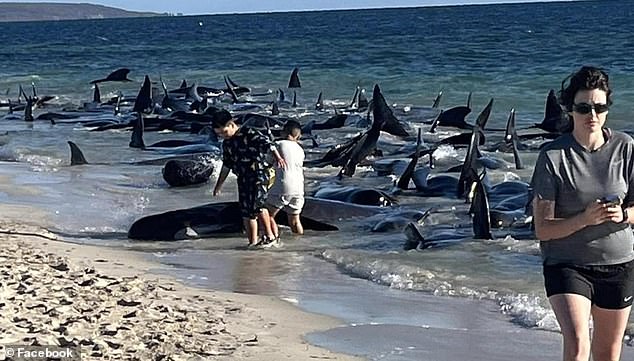
A Parks and Wildlife spokesperson said they knew people wanted to help, but asked that they not attempt to rescue the whales without direction from DBCA staff, because it could cause further injury and distress to the animals and hinder a coordinated rescue effort. .
A Parks and Wildlife spokesperson said they knew people wanted to help, but asked that they not attempt to rescue the whales without direction from DBCA staff, because it could cause further injury and distress to the animals and hinder a coordinated rescue effort. .
“The top priority in the event of mass whale stranding is always human safety followed by animal welfare.”
‘We want all staff and volunteers to return home safely.
“We ask that people follow the instructions of DBCA staff to ensure the best human safety and animal welfare outcomes are achieved.”

